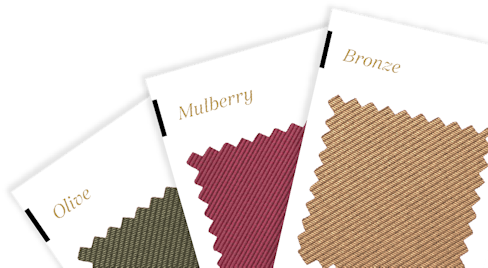What Is Semi-Formal Attire vs. Formal Attire? Choose the Right Attire for Every Occasion
Weddings and other events tend to have dress codes, and they’re not always easy to interpret. Formal. Semi-formal. White tie. Black tie. There are many options, and each dress code has its own unwritten rules and customs that need to be followed. Understanding those rules and figuring out the specifics of semi-formal vs. formal attire is key if you want to dress correctly.
But what exactly is the difference between formal vs. semi-formal attire? How do the two compare and what separates a formal outfit from a semi-formal one? If you’ve found yourself asking those kinds of questions, you’re not alone. Many people panic or worry when they receive a formal or semi-formal invite, but this guide will cover all you need to know.
Decoding Dress Codes: A Brief Overview
The concept of dress codes goes back centuries. People have always enjoyed dressing up for big events, from weddings to galas, dances, birthday celebrations, and more. Traditions and attitudes may change as the years go by, but even now, people still like the idea of putting on fancy suits and dresses to honor a special occasion.
And it’s easy to see why. Having a dress code for a big event has many advantages. It helps to set the mood of the occasion. Weddings with every guest in fancy suits and dresses, for example, simply feel more elegant and sophisticated. Dress codes can also provide a sense of harmony, as well as giving clear instructions to guests who aren’t sure what to wear, helping avoid any awkwardness or embarrassment.
That’s the basics of dress codes explained, but how do you figure them all out? While they may seem confusing at first, each dress code has its rules and concepts to follow. The formal dress code, for instance, is all about dressing elegantly. Meanwhile, a casual dress code allows guests to wear more comfortable, casual clothing, like chinos and blazers for men.
Learning about dress codes, like formal and semi-formal, makes it much easier to pick out appropriate outfits for every event. It’s also strongly recommended always to read your invitation, as this can tell you the desired dress code and provide other clues on how to dress. The date, venue, and time of day can influence your attire.
What Is Semi-Formal Attire?
It’s fair to say that the semi-formal dress code can be a source of confusion for many people, and this is mostly due to its relatively vague nature. While other dress codes are relatively clear – black-tie, for example, generally means “tuxedos and floor-length gowns” – the semi-formal code is more open to interpretation.
Ranu Coleman of wedding brand Azazie puts it neatly and concisely in The Knot, describing, “Semi-formal falls in the gray area between casual and formal.” In other words, a simple way to think of semi-formal attire is that it’s fancier than casualwear or typical office attire but not quite as refined as evening gowns and tuxedos.
Neatness and elegance are key features of any semi-formal outfit. This type of dress tends to be worn at weddings, parties, and similar events. Semi-formal dress is a popular choice for events where the hosts want to achieve a certain level of class without asking everyone to wear tuxedos.
Examples of semi-formal attire can include the likes of a dark suit and tie for men or a cocktail dress for women. Tuxedos and floor-length gowns are a little too much, but the likes of khakis, jeans, and polo shirts are far too little. Those items would fall instead into men’s casual wedding attire.
What Is Formal Attire?
Formal attire is the next level up from semi-formal. And, as the name implies, this attire is designed to be formal, fancy, and sophisticated – think suits, tuxedos, and evening gowns.
In the grand scheme of dress codes, formal wear is just one step below black-tie. Coleman notes, “A formal wedding dress code is slightly less formal than a black-tie event, and generally, it tends to have fewer specifications.”
One of the benefits of formal dress codes is that it’s very hard to overdress for such an event. Dark suits, floor-length evening dresses, smoking jackets, and so on are all relevant for this occasion. It’s not uncommon for a formal event to have a “black-tie optional” dress code, suggesting guests can wear full black-tie outfits if desired.
Formal attire is often chosen for weddings that aim for grand, elegant atmospheres and aesthetics. Galas, charity events, nights at the opera or theater, and similarly special occasions can all call for formal clothing. In most cases, men will want to stick with a classic white dress shirt and well-fitting dark suit, while women should favor long gowns.
The Difference Between Semi-Formal and Formal
Ultimately, the difference between semi-formal and formal is quite simple: formal is the next step up on the dress code scale, with more formal, refined outfits than a semi-formal occasion. Put another way, you can dress in a slightly more relaxed way at a semi-formal event, while formal weddings and other celebrations demand a certain standard of finery.
In terms of actual clothing items, the difference between formal and semi-formal is also quite clear to see. At a formal event, you’ll see the finest suits and tuxedos, and almost all women will be wearing floor-length gowns. In contrast, semi-formal events feature guests in a wider range of suits and dresses, with more colors and textures on display.
With regard to accessories, formal vs. semi-formal codes have notable differences, too. At a formal event, you won’t see many flashy or glitzy accessories. Instead, men will wear simple cufflinks and black bow ties, while women may opt for subtle necklaces and earrings. Again, at a semi-formal gathering, expect more variety: cufflinks, neckties, belts, suspenders, and various items of jewelry.
Men’s Guide to Semi-Formal and Formal Attire
Male guests sometimes struggle to discern between semi-formal and formal and often worry about being overdressed or underdressed for the occasion. Here’s a quick guide to men’s attire for each dress code.
Semi-Formal
At a semi-formal event, the rules are more relaxed than formal. However, suits are still the standard. Semi-formal cocktail attire, for instance, usually includes crisp dress shirts, dinner jackets, blazers, and a dressy pair of pants. Regarding footwear, men’s semi-formal options include brogues, loafers, and dress shoes. And for accessories, you don’t need a tie, but a pocket square can elevate your look.
Formal
Formal attire for men is stricter. At a formal occasion, you should try to wear either a tuxedo (especially if the invite mentions “black-tie optional”), or a dark formal suit. Stick to dark colors like black and navy, and avoid the lighter shades you’d expect at a semi-formal affair. Men’s formal footwear should always be dress shoes, with bow ties, neckties, and cufflinks.
Seasonal Considerations for Semi-Formal and Formal Events
When it comes to what to wear to a semi-formal wedding or formal event, you must consider the timing. Events can be held throughout the year, on sunny days or frosty winter nights. Weather conditions vary greatly, and it’s important to adapt your outfit to suit the conditions for every formal occasion.
In the summer, for example, with warmer temperatures, it’s best to opt for lighter fabrics and fewer layers. If the code is semi-formal, you’ve got more options. You can opt for lighter, summery shades like light blue and gray suits or floral gowns. A formal option for summer would be to find a lightweight dinner jacket rather than a full tux. Women can opt for a chic cocktail dress.
When winter comes, you’ll likely need a warmer outfit to stay comfortable and enjoy the occasion. Formal wedding attire for a winter event may include tuxedos and dark suits in heavier fabrics for men, or with an additional layer like a vest. For ladies, they can accessorize to stay warm with items like shawls. Women could wear a warmer jumpsuit for a less formal occasion, while men could layer up or pick out a warm wool suit.
Tips and Tricks: How to Nail the Dress Code Every Time
Even with clear explanations of formal attire vs. semi-formal, it’s still easy to make mistakes with dress codes and outfits. Here are a few handy tips on what to wear, no matter the occasion:
- Always read the invite thoroughly. Rule No. 1, when picking out an event outfit, is to read your invitation first. Especially for weddings, the dress code should be listed on the invite. It’ll also tell you the date and venue, so you can figure out the general vibe and expected weather conditions.
- If in doubt, ask. There’s no harm in asking the hosts or other guests about what to wear for an event. If you have any doubts or concerns, or if the code sounds too vague, just contact them. It’s much better to ask for some clarity rather than being unsure about your outfit and not knowing what to pick.
- For formal, avoid under-dressing. At formal events, the golden rule is that you can’t really be too dressed up, but you can definitely be underdressed. So, if you feel that your outfit might not be formal enough, you’re probably right. Opt for the most formal items to ensure you won’t look out of place.
- For semi-formal, don’t go over the top. At formal events, the big worry is underdressing. For semi-formal, it tends to be the opposite. If you turn up in a tux or glamorous gown, you might look like you’re at the wrong event. That doesn’t mean you should go too casual, either, but don’t be afraid to pick outfits with a bit of color, texture, or pattern to them.
- Stick to the classics. Ultimately, if you really can’t decide what to wear to an event, or have doubts about your outfit, just stick with the classics. If you’re heading somewhere formal, you can rent mens tuxedos from Generation Tux, for example. Or, for semi-formal occasions, stick with a classy suit or cocktail dress.
Conclusion: Your Ultimate Guide to Choosing the Right Attire
In the grand semi-formal vs. formal debate, it’s clear that these dress codes have clear and notable differences. Neither is necessarily better than the other, and both have their benefits and ideal uses. Classy, formal attire allows an event to take on a certain level of refinement and sophistication. Meanwhile, semi-formal dress gives guests a little more freedom in terms of what to wear.
Hopefully, this formal and semi-formal dress breakdown has helped you understand the key differences. So, next time you’re invited to an event, you’ll know precisely what to wear. And, whether it’s a formal occasion or a more relaxed gathering, be sure to embrace the opportunity to dress up and express yourself in a unique and elegant way.
Featured Products
Get started.
Stylish suits and tuxedos delivered straight to your door. See our collection and rent now.

